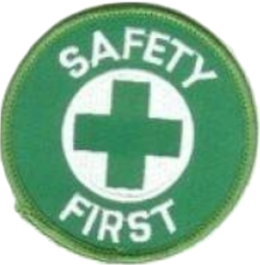Harsco Video®
Merriam-Webster’s definition of accident is, “an unfortunate event resulting especially from carelessness or ignorance.” The first example of the word used in a sentence is, “He was injured in an accident at work.” Why does the first example of accident involve the workplace? Because, unfortunately, workplace accidents are far too common. Each year, more than 2 million workers are injured severely enough on the job that they cannot return to work and need ongoing medical care. As an employer or manager, it’s your job to help protect your employees from accidents that threaten their work and wellbeing. Follow these 5 best practices to prevent accidents in your workplace.
Note: Although you are responsible for creating a safe work environment, it is each worker’s responsibility to take an active role in maintaining safety. So make sure your employees are following these best practices:
- Shortcuts & Shortcomings: — It’s natural to want to get the job finished on schedule — or even ahead of time — but with a “get it done quick” attitude, accidents happen. Don’t take shortcuts — stick to the instructions and work with diligence and awareness of your surroundings. Also, if there are shortcomings in the instructions, don’t begin the work until they are clarified and all your questions are answered! You must always be comfortable and familiar with the procedure before commencing any work.
- Safety in Transit: — According to OSHA, workplace-driving accidents cost employers an average of $60 billion a year. Make sure that all company vehicles are inspected each month and necessary repairs are made as soon as possible. Before driving a company vehicle, check break lights, turn signals, tire pressure and amount of gas in the tank.
- FOR THE EMPLOYER: OSHA’s “Work-Related Roadway Crashes: Prevention Strategies for Employers” is an excellent resource, filled with driving strategies, policies and programs to implement in your workplace.
- Weather the Weather: — Both inside and outdoor work may expose you to extreme conditions. Whether very hot or very cold, both ends of the temperature spectrum can impact your health.
- Cold: Dress in layers and make sure you properly cover your head, feet, hands and face — these parts of your body are most prone to frostbite. Always keep a change of clothes at work in case your clothes get wet.
FOR THE EMPLOYER: If your workers are exposed to cold conditions, install on-site heating devices. - Heat: Wear loose-fitting clothes, take frequent breaks in a cool rest area and get plenty of fluids. If you have preexisting medical conditions, consult your doctor before working in extreme heat.
FOR THE EMPLOYER: If your workers are exposed to extreme heat, make sure there is adequate ventilation and airflow — open windows and utilize fans.
- Cold: Dress in layers and make sure you properly cover your head, feet, hands and face — these parts of your body are most prone to frostbite. Always keep a change of clothes at work in case your clothes get wet.
- Make PPE a VIP: — Personal Protective Equipment is crucial to prevent injury, so make sure you wear it… and wear it properly! This includes:
- Goggles and face protection to protect from flying particles, chemicals or caustic liquids.
- Gloves to prevent cuts, scrapes, punctures, burns, chemical absorption or temperature extremes.
- Hard hats to safeguard against falling objects.
- Safety shoes for work areas where heavy objects could be dropped and injure the feet.
- Ear muffs or ear plugs to protect against hearing damage in noisy workplaces.
FOR THE EMPLOYER: Providing the safety equipment isn’t enough — you must make sure that your workers know how to use it properly. Provide adequate PPE training.*
- Shipshape Safety: — Many workers don’t realize the negative consequences of poor housekeeping. If an unkempt workplace becomes the norm — paper, debris, clutter and spills are accepted as “familiar” — then more serious health and safety hazards are overlooked and injuries become more probable. Housekeeping goes beyond personal cleanliness — it also includes keeping work areas orderly, taking care of any slip-and-trip hazards as soon as they arise and removing waste and fire hazards regularly. Assess your work environment with a critical eye and pay attention to the layout of the workplace, aisle marking, adequacy of storage and maintenance. Report dangers or deficiencies right away!
- FOR THE EMPLOYER: OSHA’s Good Housekeeping in Industry not only explains the significance and benefits of good housekeeping, but also provides a good housekeeping checklist and elements of a good housekeeping campaign.
The backbone of a safe working environment is a proper accident prevention program that incorporates the aforementioned practices and encourages employees to take safety measures seriously. As an employer, it’s your job to make your employees feel comfortable asking questions and reporting dangerous situations — make them feel safe to be safe.




One thought on ““Five Ways To Prevent Workplace Accidents””